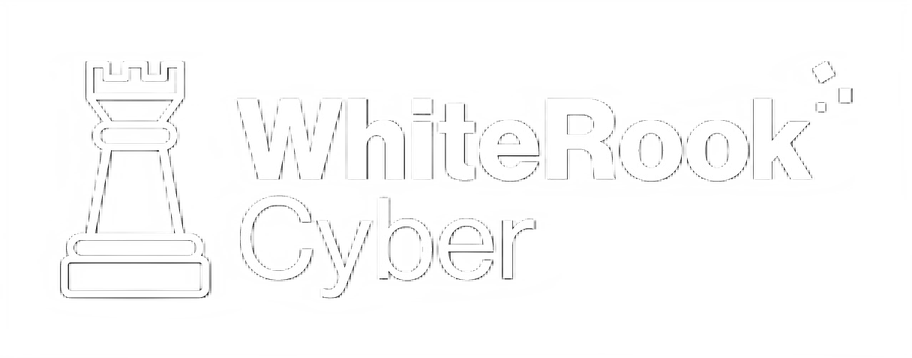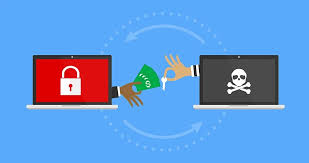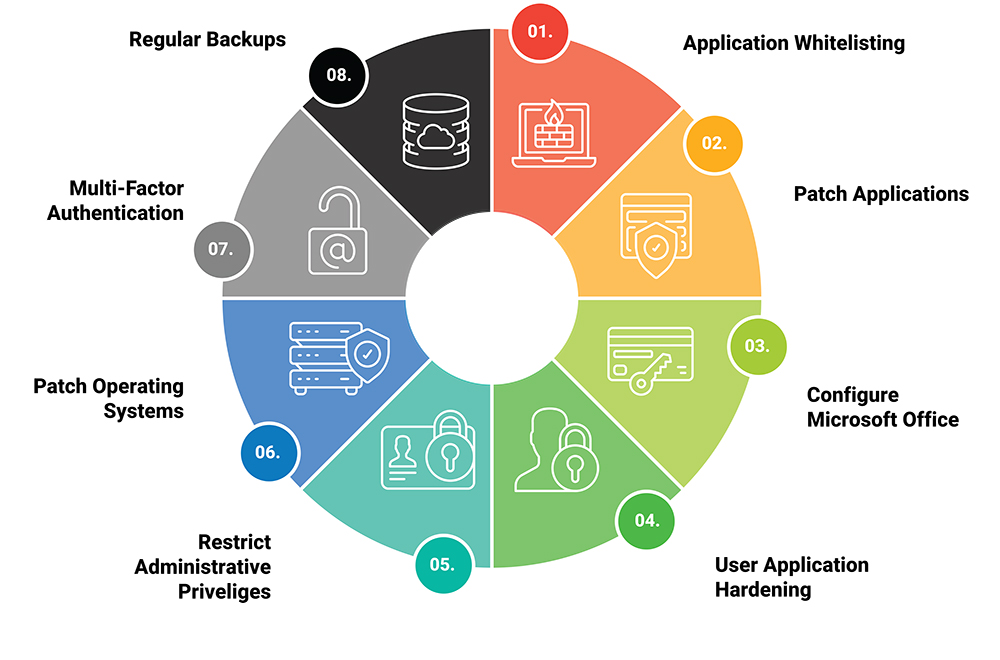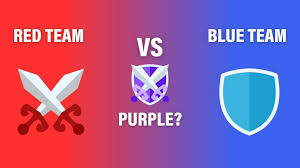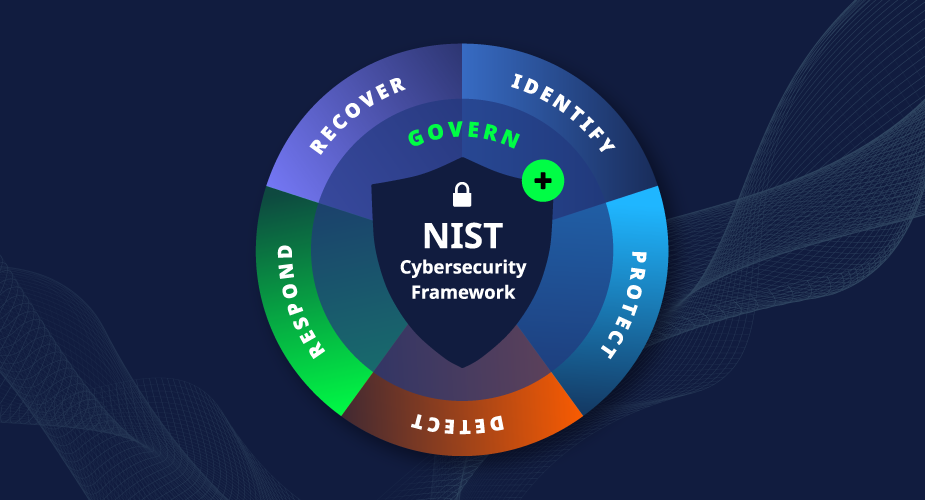When choosing between the Essential Eight and SMB 1001 cybersecurity frameworks, it’s important to understand their purpose and which best suits your business. Here’s an introduction to both frameworks, a comparison, and key factors to help you decide which is right for your organisation.
Introduction to The Frameworks
Essential Eight (Australian Cyber Security Centre)
The Essential Eight is a set of baseline mitigation strategies developed by the Australian Cyber Security Centre (ACSC) to help organisations strengthen their cybersecurity. It’s designed for a wide range of organisations, providing solid protection against common cyber threats.
The Framework Focuses On:
- Application control
- Patch applications
- Configure Microsoft Office macro settings
- User application hardening
- Restrict administrative privileges
- Patch operating systems
- Multi-factor authenticator (MFA)
- Daily backups
These strategies aim to protect against frequent and impactful cyber risks, with different maturity levels depending on the organisation’s specific needs and risk profile.
SMB 1001
The SMB 1001 is a cybersecurity framework tailored specifically for small to medium-sized businesses (SMBs). It provides a set of guidelines that address typical security concerns for smaller organisations, ensuring practical and effective measures are in place to protect digital assets.
The Framework Focuses On:
- Risk management
- Data protection and privacy
- Incident response and recovery
- Network security
- Access control
- Security awareness training
It offers a comprehensive approach to managing cyber security risks, incorporating simplified and cost-effective solutions for businesses with limited recourses.
Comparison Of the Frameworks:
Factors to Consider When Choosing the Right Framework
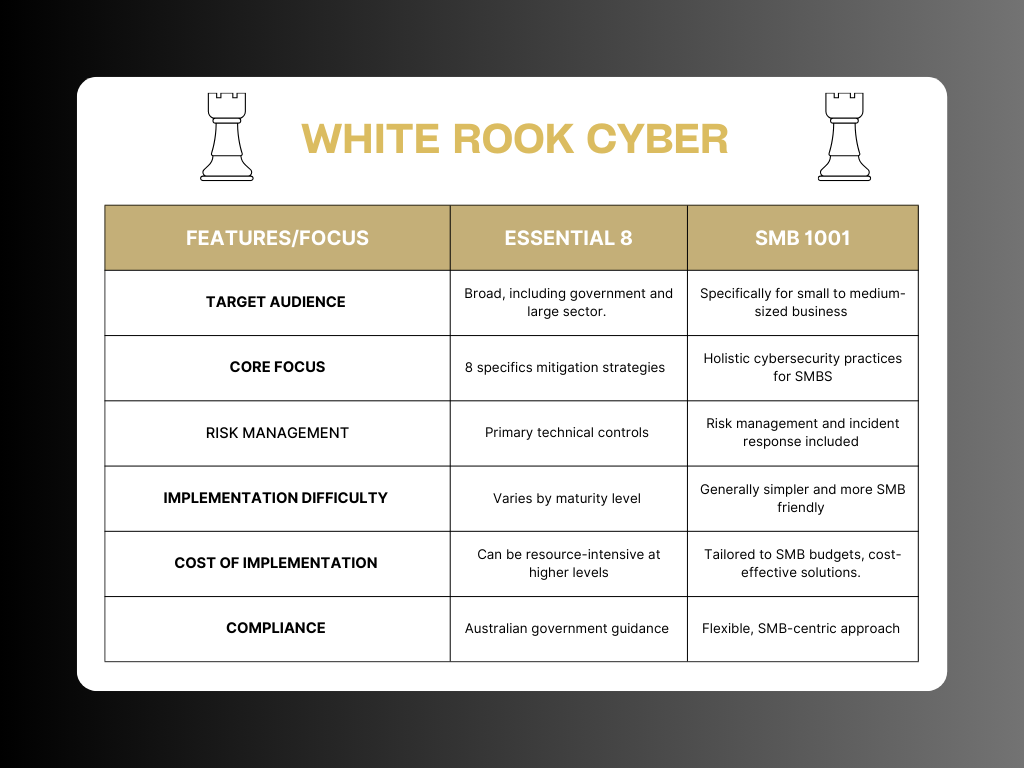
Business Size and Complexity
- The Essential Eight is better suited for larger organisations or those with specific compliance requirements, such as government bodies or regulated industries.
- SMB 1001 is ideal for small to medium-sized businesses looking for practical, easy-to-implement cybersecurity solutions without needing extensive technical resources.
Recourse and Availability
- Implementing the Essential Eight, especially at higher maturity levels, can require more technical expertise, staff, and financial resources.
- SMB 1001 provides more accessible and cost-effective measures, allowing businesses with smaller IT teams or budgets to maintain strong cybersecurity.
Compliance Requirements
- If your business operates in an industry where compliance with Australian government standards is mandatory, the Essential Eight is likely the better choice, as it aligns with national security practices.
- If specific compliance standards aren’t required, SMB 1001 offers flexibility while still maintaining robust cybersecurity.
Cybersecurity Maturity
- The Essential Eight offers varying levels of maturity (from basic to advanced) that organisations can adopt depending on their current cybersecurity capabilities.
- SMB 1001 is designed with the needs of smaller business in mind, offering a straightforward path to improving security without the complexities of higher maturity models.
Risk Tolerance
- For businesses that are highly risk-averse, the Essential Eight provides the focused technical controls needed to defend against advanced cyber threats.
- SMB 1001 is more suited to businesses looking for a balanced approach, addressing a broad range of risks while keeping solutions practical and scalable.
Which Framework Is Right for Your Business
If your business is a small to medium-sized enterprise with limited IT resources and no stringent compliance requirements, SMB 1001 will likely offer a more tailored approach to protecting your business while keeping costs and complexity manageable.
On the other hand, if your business has regulatory obligations, handles sensitive information, or requires a higher level of cybersecurity, the Essential Eight may be the better option to ensure robust defences are in place.
Ultimately, your decision should be based on your organisation’s size, resources, risk tolerance, and compliance needs.
Need help choosing the right framework? At White Rook Cyber, we specialise in tailoring cybersecurity solutions to your business needs. Whether you’re a small business or a larger organisation, we’ll help you implement the right framework.
